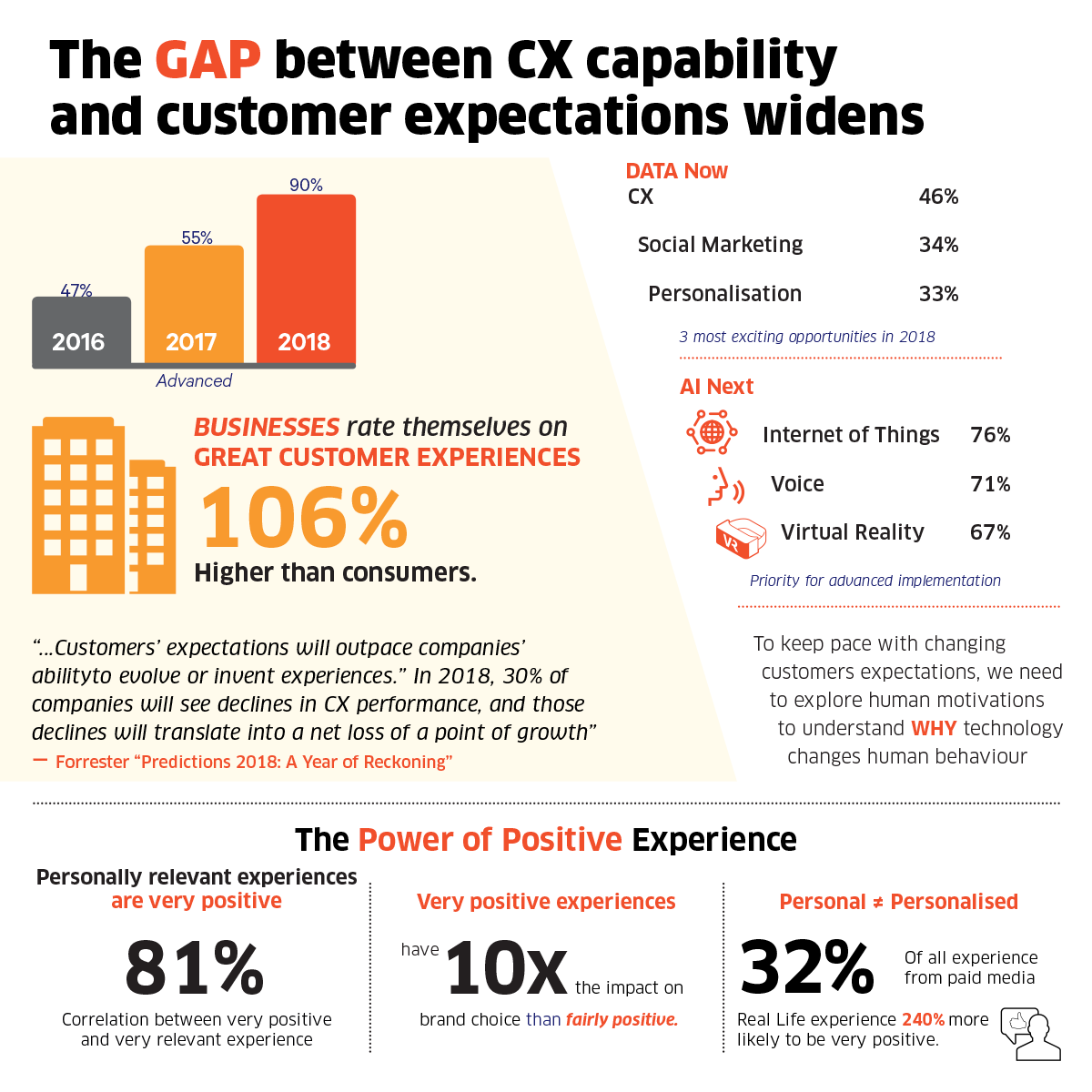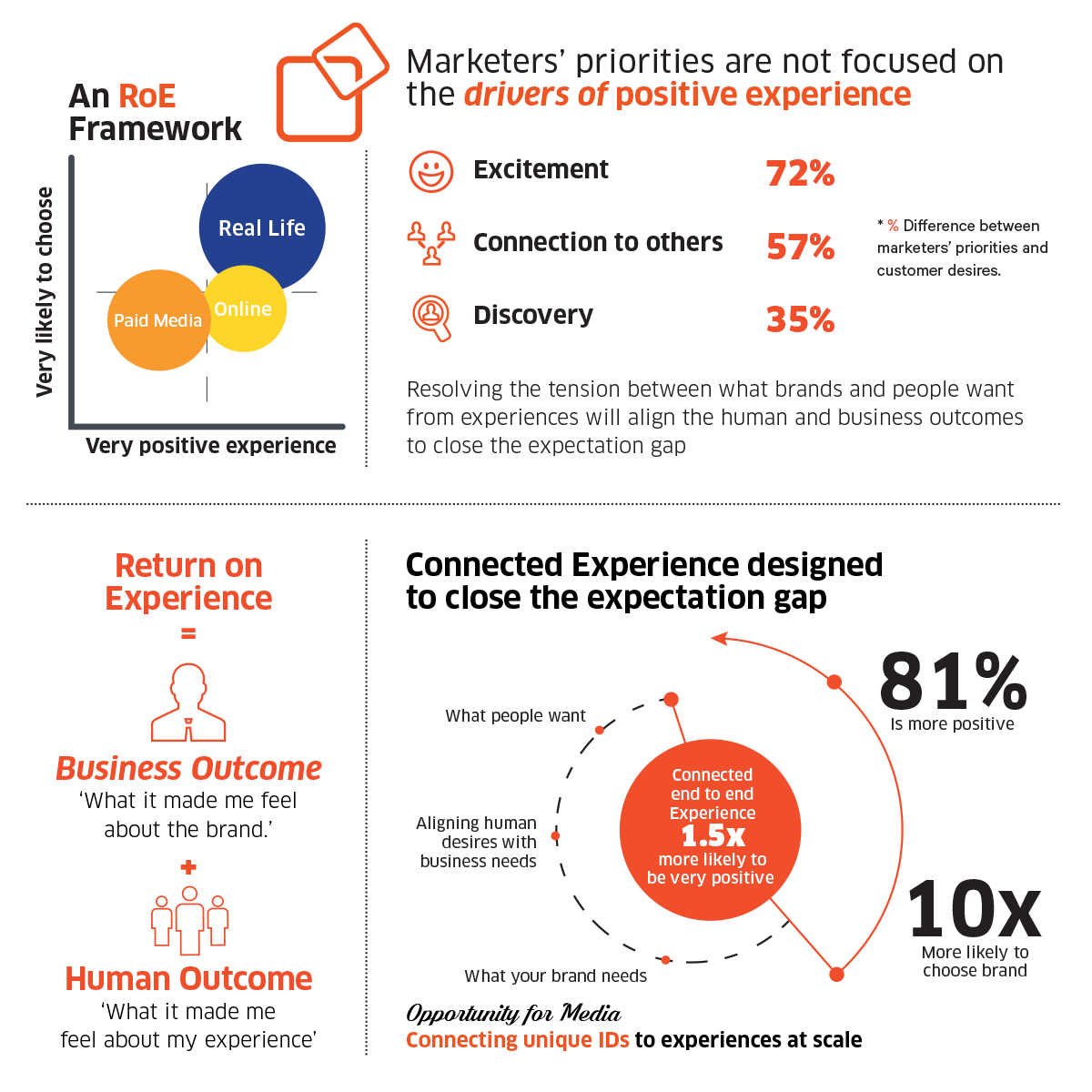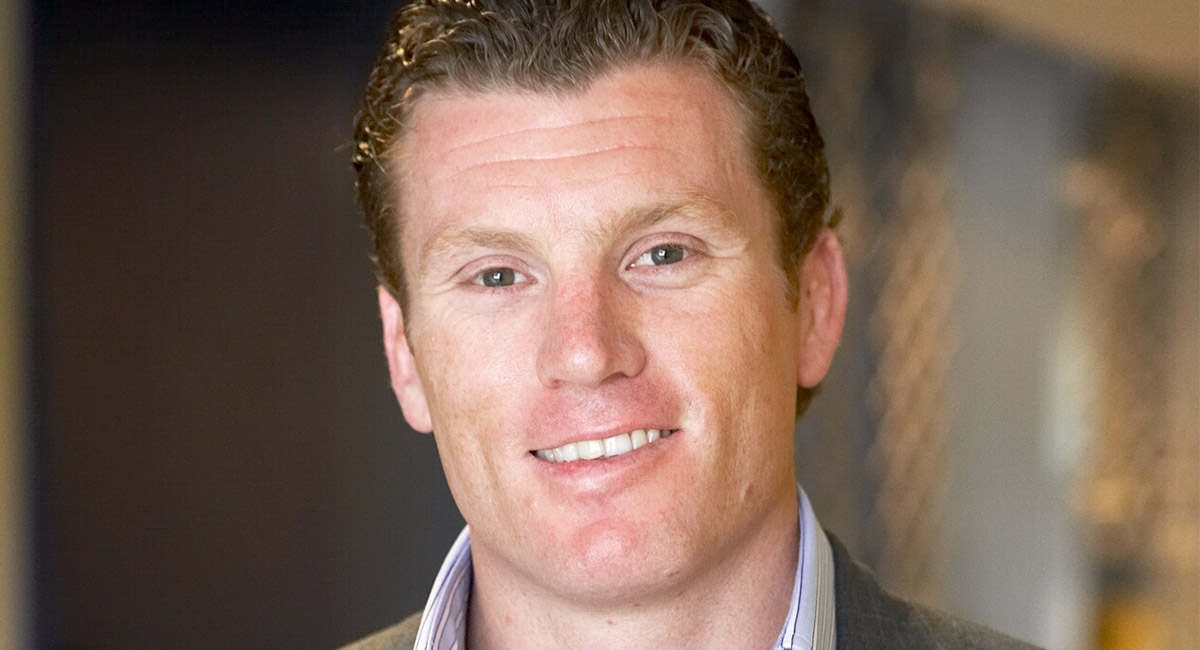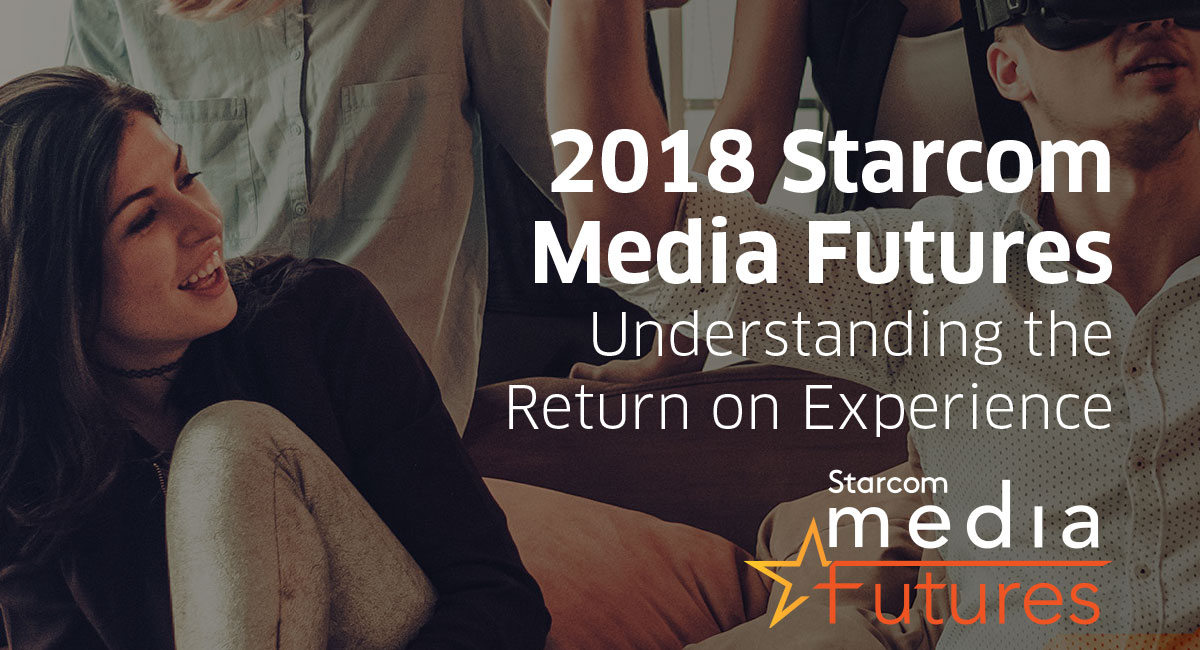• 2018 Starcom Media Futures Report finds very positive experiences have 10 times the impact on brand choice
• ROE is the most valuable measurement for brand choice
The 2018 Starcom Media Futures report was released today at an Australian Association of National Advertisers (AANA) Sydney event attended by 150 marketers and media executives. A Melbourne launch event is being held by the AANA tomorrow.
MORE: AANA CEO John Broome on the future of advertising
Starcom claims this is the only report of its kind, and uses a combination of consumer and industry research with marketers and media owners.
This year the report highlights Australian businesses said that they had reached 90% adoption of advanced customer experience (CX) practice – versus the 2017 figure of 55%.
However the expectation gap between companies and consumers has widened, with marketers rating themselves more than twice as high (106%) as consumers in delivering great CX.
The report also identified three future media battlegrounds.
1. From personalised to personal, which leads to higher ROE.
2. Personal TV, where live audiovisual consumption is still king with 81%. The ad-funded challenge for the growing on-demand audience which pays for Netflix or Stan.
3. Voice: The growth of digital voice assistants from the likes of Amazon, Google and Apple. Devices are expected to be in 30% of Australian households within three years.

Influencing Consumer Behaviour
The Power of Positivity was identified as the single biggest factor influencing consumer behaviour and CX in the report. The biggest influence on positive experiences is “personal relevance”, with 81% of very positive experiences being very personally relevant.
People who had a “very positive” experience are 10 times more likely to choose a brand than those who had a “fairly positive” experience.
The report found that real life experiences with brands are 2.4 times more likely to be very positive. Just 32% of experiences were as a result of paid media, meaning that marketers and media need to rethink the role of all media across paid, owned, earned and shared to created powerful connected experiences.

Media Futures has identified “return on experience” (ROE), as an additional measure that works in tandem with return on investment (ROI). ROE, which combines business and human outcomes, is the most valuable measurement for brand choice.
“We can now quantify the value of real life connected experiences through ROE. Connected end-to-end experiences through paid, owned, earned and shared are 1.5 times more likely to be very positive. The underlying cause of the expectation gap is in missing the fundamental drivers of human behaviour – the power of positive customer experiences,” Starcom Australia CEO Toby Barbour said.
“We have evolved our approach to Media Futures, focusing primarily on understanding human motivation, and applying our insights to close the gap between what people want, and what brands need to drive long term growth.

Starcom Australia CEO Toby Barbour
“Our focus for client investment will be working to close the expectation gap by satisfying the tension between what people want and what brands need to create connected experiences that drive human and business outcomes. The ROE framework will be a key indicator of success,” he said.
The 25-year-old Media Futures study has changed its methodology due to the rapid rise in the scope and breadth of media available to marketers over the last decade. The study uses “real time experience tracking” to analyse what experiences impact customer behaviour – not just what people did, but also how it made them feel towards brands and what changed as a result.
